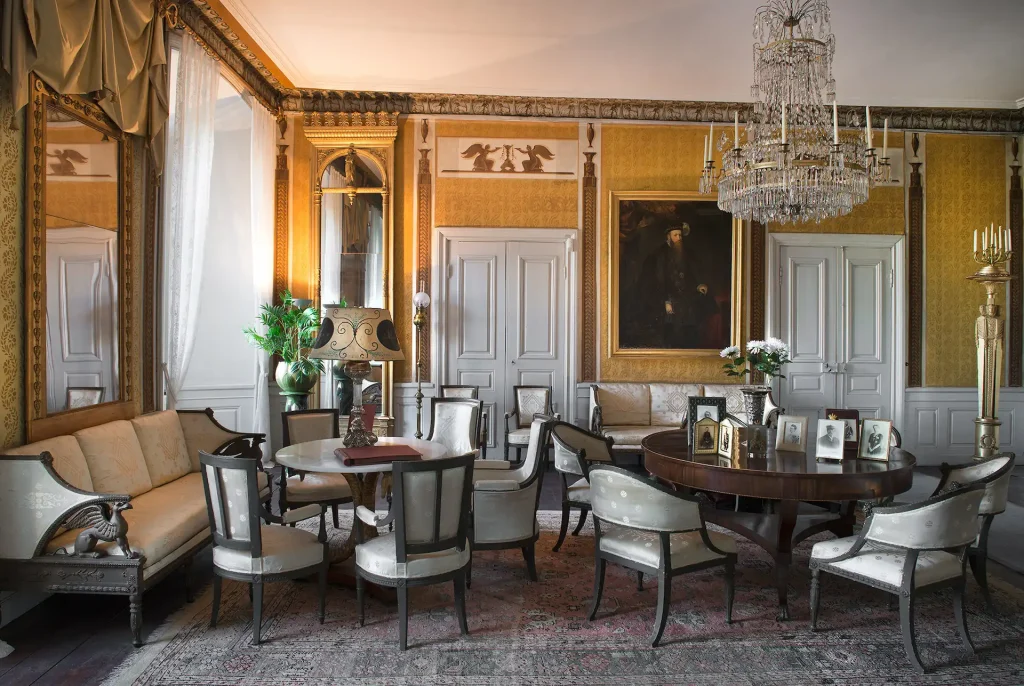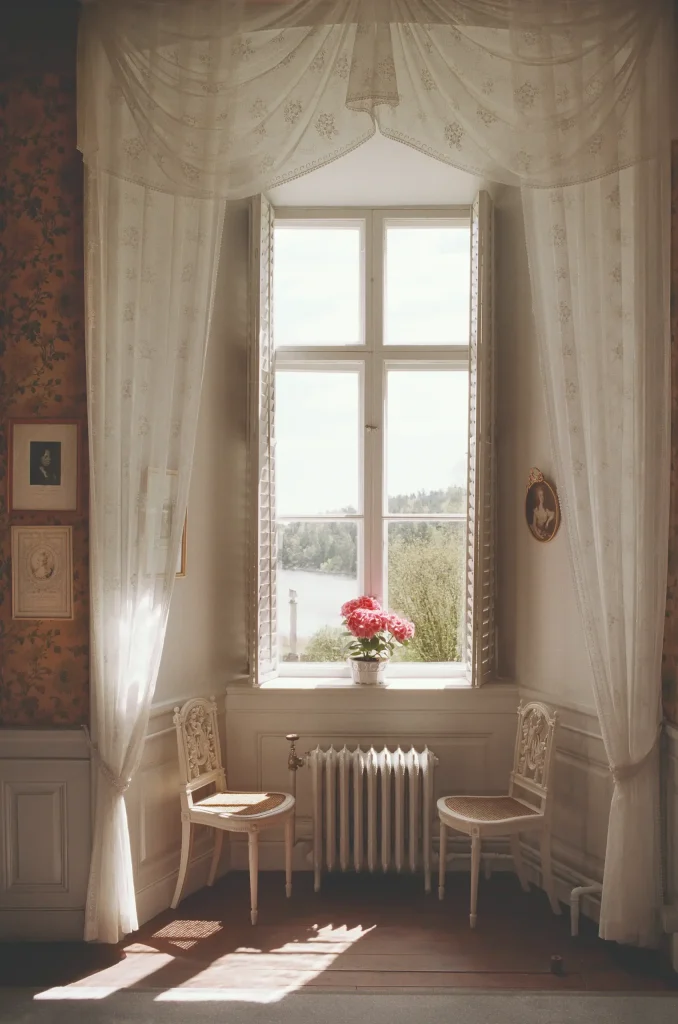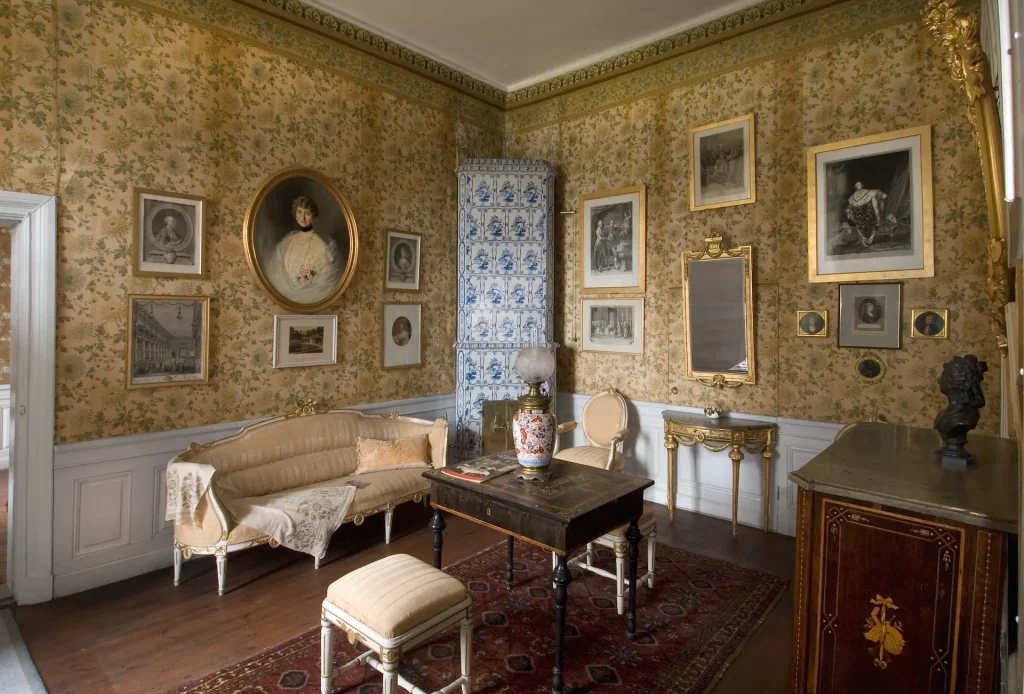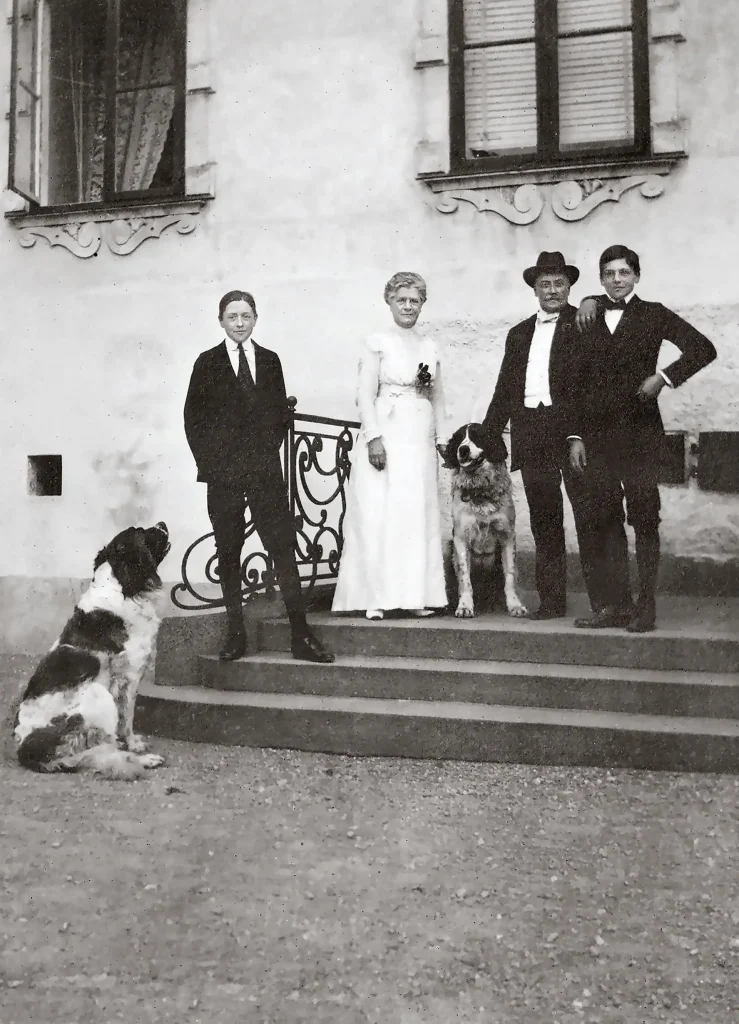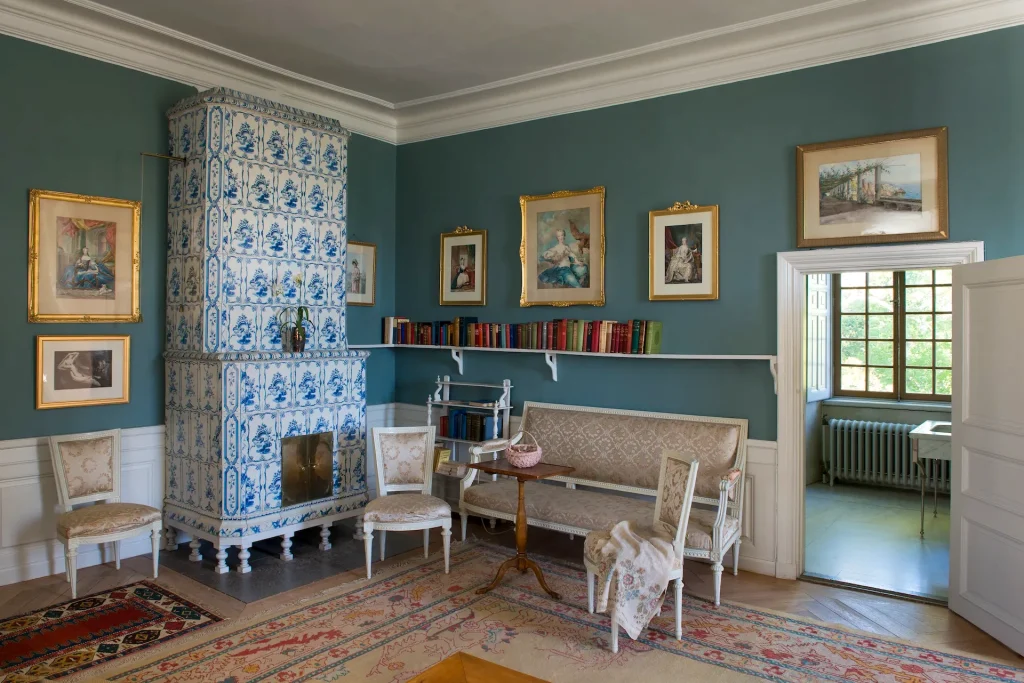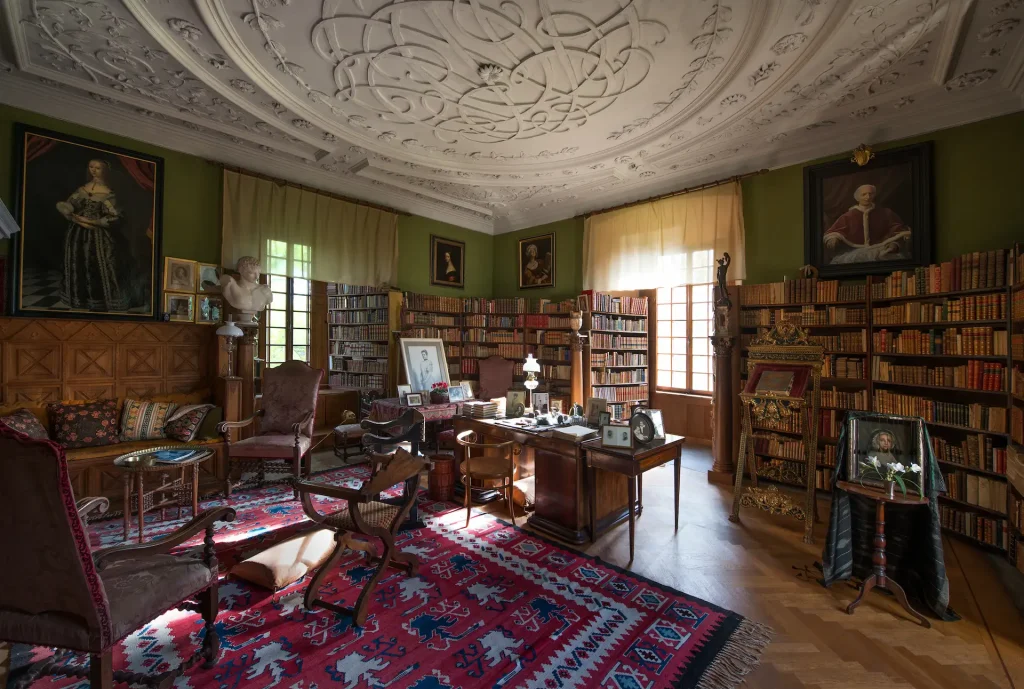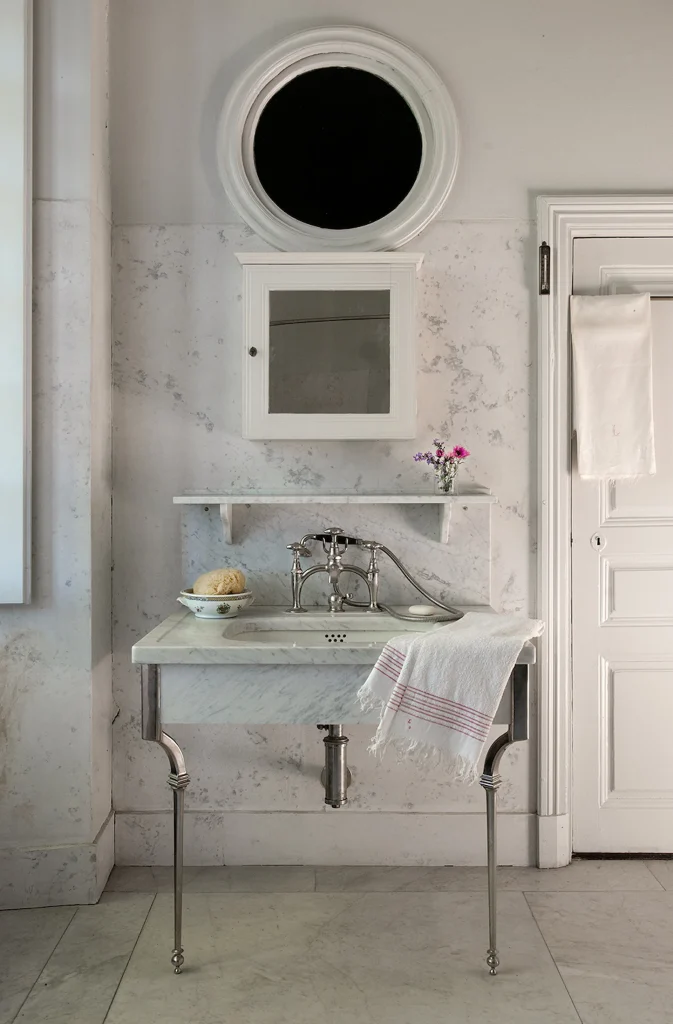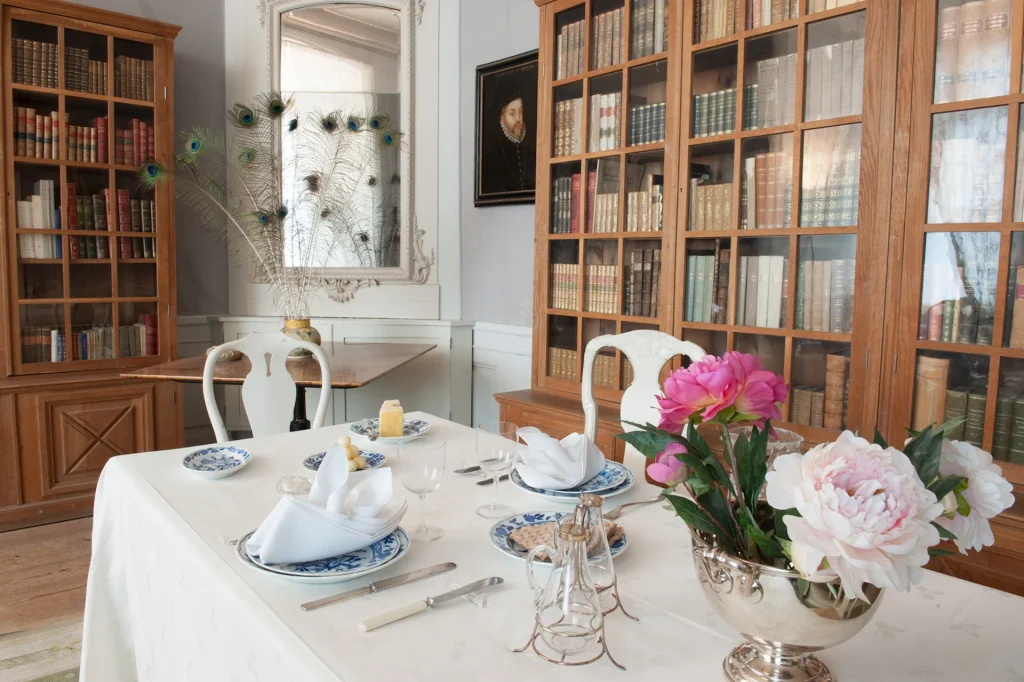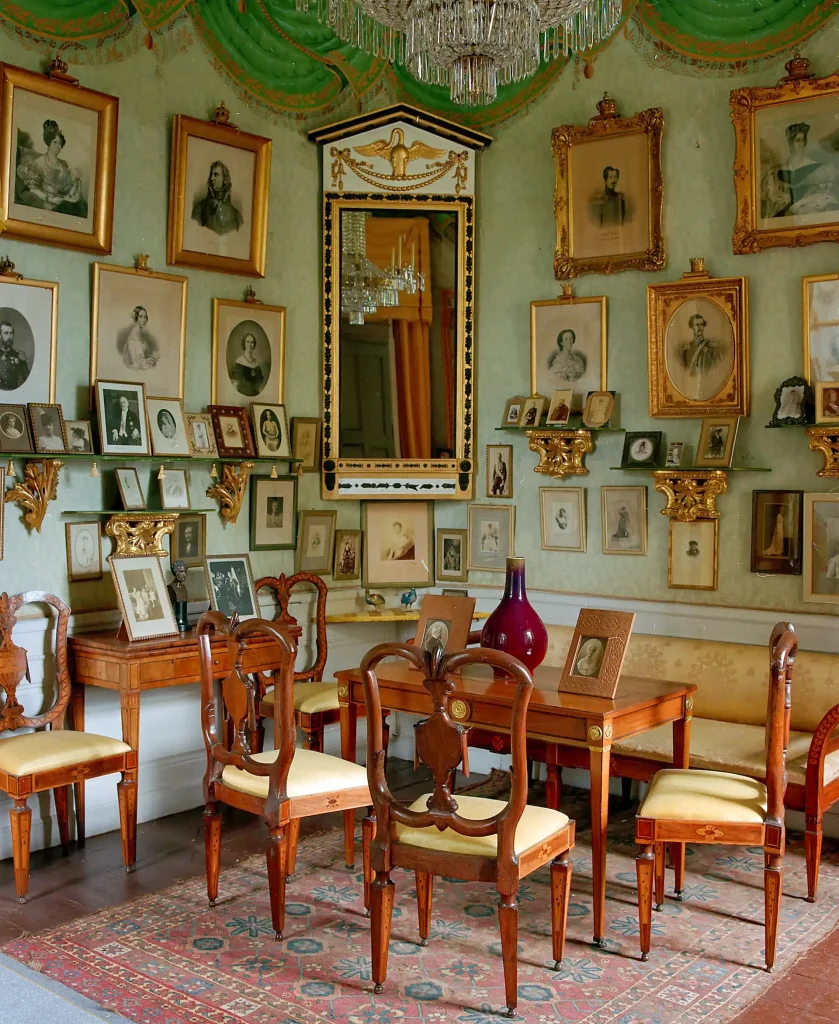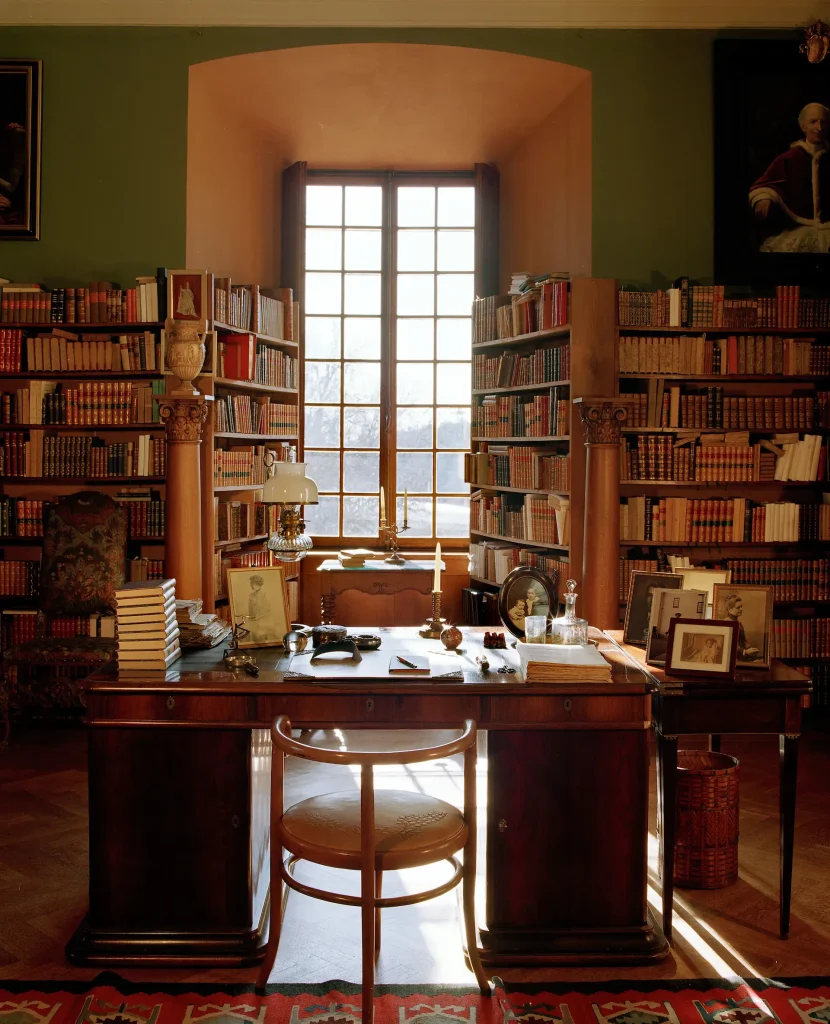About Tyresö Palace
Tyresö Palace and park tells the story of life around a palace at the turn of the 20th century, in an English-style park and Mediterranean-inspired garden. It’s beautifully situated on the shimmering shore of Kalvfjärden, south of Stockholm.
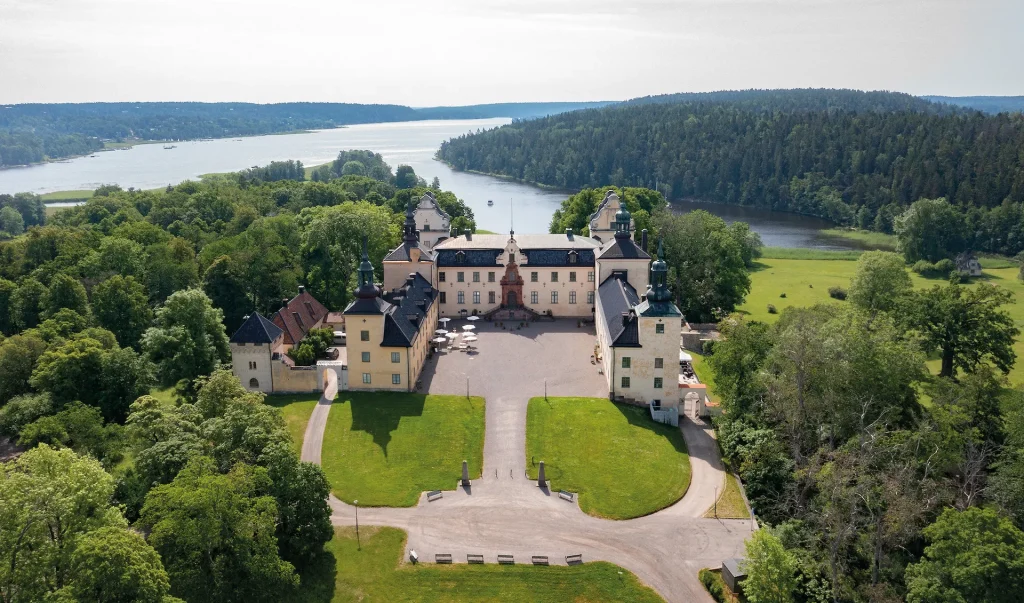
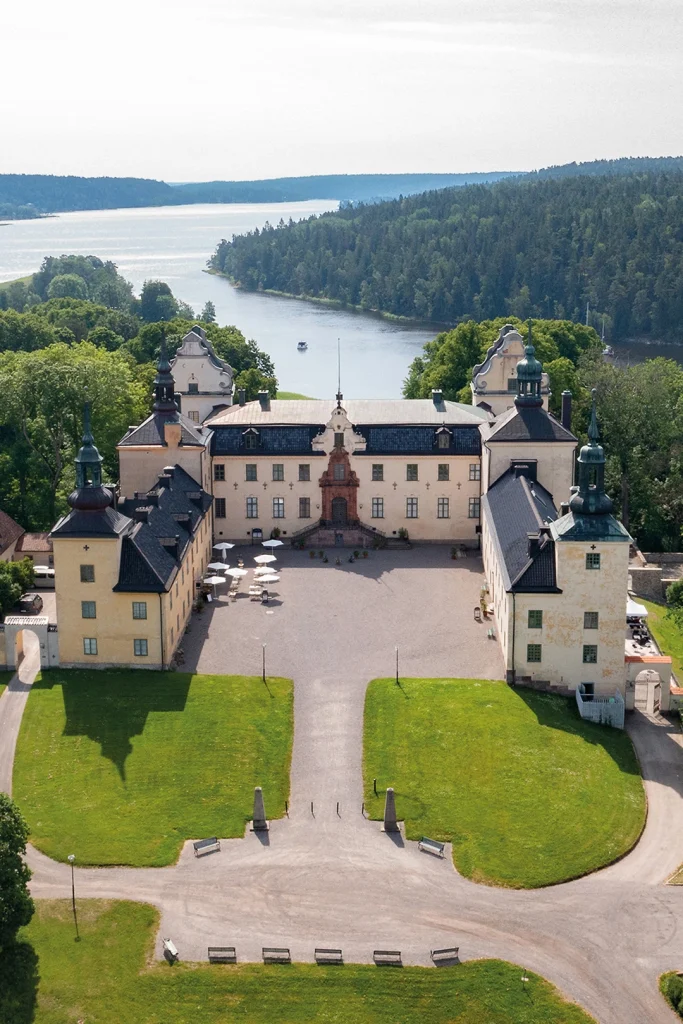
The history of Tyresö Palace
Gabriel Oxenstierna, Councillor of the Realm, inherited the medieval Tyresö and built the present palace and Tyresö Church in the 1630s. In the 1770s the palace was modernized and an English park – the first of its kind in Sweden – was added.
Today the palace shows an environment from the years around 1900. Here in the natural beauty of Tyresö the last private owners, Claes and Caroline Lagergren, wanted to create a magnificent and comfortable home for themselves and their three sons.
Inspiration from the Mediterranean
The restoration, which was a romantic interpretation of the look of the seventeenth-century palace with certain additions, was undertaken by Isak Gustaf Clason, the architect of the main museum, Nordiska museet, on Djurgården in Stockholm.
With inspiration from Italy, the garden was also renewed with pergolas, steps and terraces. The surroundings were embellished with the plantation of thuja, spruce pyramids, roses, peonies and fruit trees.
Nordiska museet has preserved Tyresö Palace since 1930
Claes Lagergren bequeathed the palace, along with its collections and surrounding land, to Sweden’s largest cultural historical museum, Nordiska museet, in 1930. Since 1932, we have opened the palace to visitors during the summer season.
